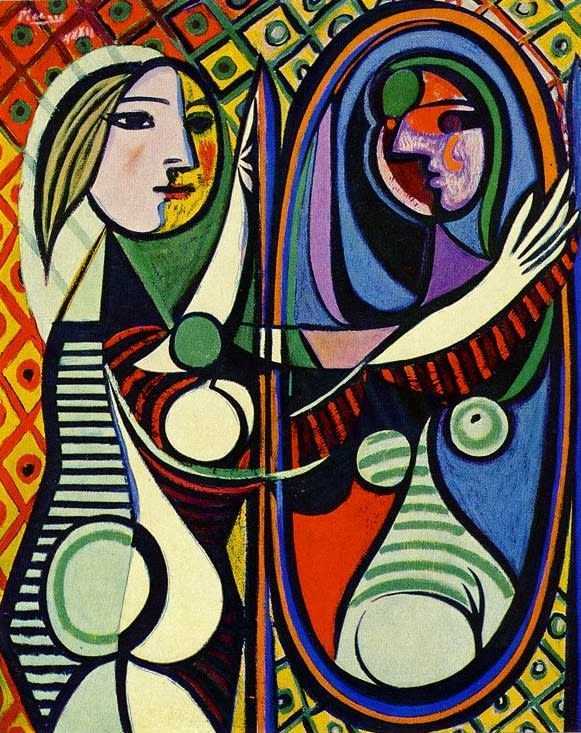subway transfer
the homeless lady
sells mirrors
A senryū named runner-up for the best senryū of 2017 from Shamrock journal by readers and contributers
This beautiful and deep senryū is about the miseries of homeless people. The opening line ‘subway transfer’ is significant in many ways, where people usually move from one destination to another. It acts like a junction where people unite before or after the journey, so usually human rights can be projected in the best way. Second, subway transfer may symbolizes the change in thoughts, or feelings that a person gets again before or after journey. In both ways, this is the best plafform to talk about human issues. I loved the certain twist in the second line, where there is a ‘homeless lady’ sits whilst people come and go. For her, there is no destiny as no one listens to her due to their busy life, or due to rush hours. She sells what? a very interesting and cleverly added last line which actually is the central theme of this senryū. She sells ‘mirrors’, which is a way to reflect on our thoughts, behaviours, feelings, and approach towards others who are living a miserable life, who really need our attention, who want to live a normal life like us. So, mirrors also a way to project our ‘humane’ aspect that is actually based on kindness and compassion. I think this senryū is the reflection of our journey that revolves around our deep connection with each other being humans.
Hifsa Ashraf, Pakistan
I’ve fallen in love with this poem since i’ve read it for the first time, and I still find it full of meaning, deep and encouraging the not easy discovers about our soul and spirit.
The hypnotic sound of “s” in each line, the “r” that links first and third line matching the two words “transfer” — related to the daily trip in the subway for workers and students, but also a psychoanalytic term — and “mirrors”, give to this senryū a very alchemical and introspective essence.
Mirrors have been studied by cognitive psychology in order to understand self-recognition, self-identity, and self-consciousness. Moreover, the relevance of mirrors in spirituality, magic and arts may also suggest that mirrors can be symbols of unconscious contents.
Carl Gustav Jung investigated mirrors in relation to the unconscious, particularly in Psychology and Alchemy. However, the relationship between the conscious behavior in front of a mirror and the unconscious meaning of mirrors has not been clarified. Strange-face illusions may be the psychodynamic projection of the subject’s unconscious archetypal contents into the mirror image. Caputo, researcher at the Urbino University, Human Science Department, says strange-face illusions might provide both an ecological setting and an experimental technique for “imaging of the unconscious”.
A study at low illumination with healthy and psychiatric population has shown how people can also identify themselves in the monstrous images they can see in the mirror gazing at their faces.
This poem is telling us that a homeless woman, the author gently chooses to call “lady”, can show us, by selling mirrors, who we really are in the anonymity of a subway, where people go back and forth in a hurry and not pear attention to their inner selves.
It’s a captivating poem that leads us to the philosophical latin Socrate’s quote : Nosci te ipsum — Know yourself.
A poor lady, who has lost everything can have a very powerful impact on the minds of those are in touch with their inner selves, and seems to have almost a magical aura around herself by inviting people to buy the mirror, to gaze in the cold and weak light of the subway to their faces, their souls, and spirits consequently…
Thank you Nicholas for this wise, endearing poem, inviting us to never abandon the never ending journey to find out who we are…
Very well done!
Lucia Fontana, Italy
~o~
trasferimento metropolitano
la signora senzatetto
vende specchi
Un senryū nominato tra i primi classificati come miglior senryū del 2017 dai lettori e contributors del giornale Shamrock
Questo bellissimo e profondoun senryū parla delle miserie dei senzatetto. Il verso di apertura “trasferimento in metropolitana” in cui le persone di solito si spostano da una destinazione all’altra, ha diversi significati. Agisce come crocevia dove le persone si incontrano prima o dopo il viaggio, quindi di solito i diritti umani possono essere proiettati nel modo migliore. In secondo luogo, il trasferimento in metropolitana può simboleggiare il cambiamento di pensieri o sentimenti che una persona percepisce prima o dopo il viaggio. In entrambi i casi, questo è la miglior metafora per parlare di problemi umani. Ho apprezzato la svolta nel secondo verso, dove c’è una “signora senza fissa dimora” mentre le persone vanno e vengono. Per lei, non c’è destino perché nessuno la ascolta a causa della vita frenetica o perché è l’ora di punta. Lei cosa vende? L’ultimo verso è molto interessante e intelligentemente aggiunto ed è in realtà il tema centrale di questo senryū. Lei vende “specchi”, che è un modo per riflettere sui nostri pensieri, comportamenti, sentimenti e approccio verso gli altri che stanno vivendo una vita miserabile, che hanno veramente bisogno della nostra attenzione, che vogliono vivere una vita normale come noi. Quindi, specchi anche un modo per proiettare il nostro aspetto “umano” che è in realtà basato sulla gentilezza e la compassione. Penso che questo senryu sia il riflesso del nostro viaggio che ruota attorno al nostro profondo legame tra noi umani.
Hifsa Ashraf, Pakistan
Mi sono innamorata di questo poema dalla prima volta che l’ho letto, e lo trovo ancora pieno di significato, profondo e incoraggiante le scoperte non facili sulla nostra anima e il nostro spirito.
Il suono ipnotico di “s” in ogni verso, la “r” che collega il primo e il terzo verso che corrispondono alle due parole “transfer” e “specchi”, conferiscono a questo senryū un’essenza alchemica e introspettiva.
Gli specchi sono stati studiati dalla psicologia cognitiva per comprendere l’autoriconoscimento, l’autoidentità e l’autocoscienza. Inoltre, la rilevanza degli specchi nella spiritualità, nella magia e nelle arti può anche suggerire che gli specchi possono essere simboli di contenuti inconsci.
Carl Gustav Jung ha studiato gli specchi in relazione all’inconscio, in particolare in Psicologia e Alchimia. Tuttavia, la relazione tra il comportamento cosciente di fronte a uno specchio e il significato inconscio degli specchi non è stata chiarita. Illusioni di strane facce possono essere la proiezione psicodinamica dei contenuti archetipici inconsci del soggetto nell’immagine speculare. Caputo, ricercatore all’Università di Urbino, Dipartimento di Scienze Umane, afferma che le illusioni di strane facce potrebbero fornire sia un setting ecologico sia una tecnica sperimentale per “l’imaging dell’inconscio”.
Uno studio a bassa illuminazione con una popolazione sana e psichiatrica ha mostrato come le persone possono anche identificarsi nelle immagini mostruose che possono vedere nello specchio guardando i loro volti.
Questo poema ci sta dicendo che una donna senzatetto, che sceglie di chiamare elegantemente “signora”, può mostrarci, vendendo specchi, chi siamo veramente nell’anonimato di una metropolitana, dove la gente va avanti e indietro in fretta e senza prestare attenzione al proprio io interiore.
È un poema accattivante che ci conduce alla citazione filosofica latina di Socrate: Nosci te ipsum – Conosci te stesso.
Una povera signora, che ha perso tutto, può avere un impatto molto potente sulle menti di coloro che sono in contatto con i loro sé interiori, e sembra avere un’aura quasi magica intorno a sé invitando le persone a comprare lo specchio, a guardare nel freddo e luce debole della metropolitana verso i loro volti, le loro anime e gli spiriti di conseguenza …
Grazie Nicholas per questa poesia saggia e accattivante, invitandoci a non abbandonare mai l’infinito viaggio per scoprire chi siamo…
Molto ben fatto!
Lucia Fontana, Italy

Pablo Picasso, Girl before a Mirror (1932). Collection MOMA
